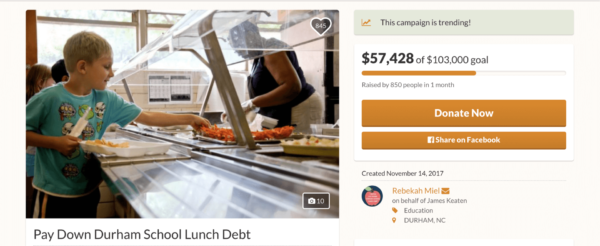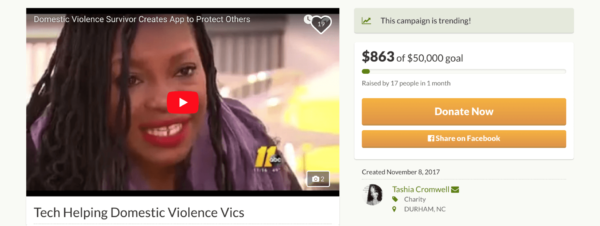A tale of two GoFundMe’s: Why centralized local sponsorship campaigns matter for multilocation brands
When you're a multilocation enterprise, curating local sponsorships can be tricky. Columnist Megan Hannay discusses ways to contribute locally using a centralized strategy.

To enterprise brand managers, “sponsorships” may mean contracts with professional sports teams or national radio shows. But local nonprofits and events are the 99 percent of the sponsorship world. They connect with locals in metro-specific markets, and they’re a channel that requires a process to scale.
Some companies approach local sponsorships on a location-by-location level, giving a certain dollar amount to each local partner. But this effort comes with problems of its own:
- Local managers don’t often have the means to survey a local market for the best sponsorship opportunities.
- Local managers may not have the time or incentive to find the sponsorship opportunities that best align with a brand mission.
The tale of two GoFundMe’s
Local brands’ sponsorship selection is often a serendipitous process: The funds go to the store manager’s next-door neighbor’s daughter’s soccer team or to the 5K fundraiser in time to solicit a sponsorship right before the end of the quarter. Or local businesses sponsor events that are already viral in the community; all the other businesses are doing it, so why not?
While this sense of momentum around certain causes feels great, it leaves less-noticed organizations even less funded. Viral sponsorship campaigns are often just louder (or luckier) than equally deserving causes.
For example, in my hometown of Durham, N.C., we have the tale of two GoFundMe’s: one to cover local public schools’ free lunch debt and the other to fund an app for victims of domestic violence.
The former was launched by a freelancer with a large network of local businesses; the latter was launched by a community member without the same connections. The former went viral here in Durham; the latter, in spite of being featured on local news, has not (yet).

A GoFundMe page for a viral local cause – reducing hunger among local schoolkids.

A GoFundMe page for a local cause that hasn’t reached virality — creating an app for victims of domestic abuse.
With the recent surge in interest around #MeToo and violence against women, the app could be a great local partnership for a business that wants to show their support for women in technology and women of color and against domestic violence.
Local store managers may not hear about the less popular local sponsorship options because they don’t always have the time or resources to keep their finger on the pulse of a city. Curating mission-oriented sponsorships across the board allows for a more comprehensive understanding of a local ecosystem.
If you can approach local donations from a big-picture perspective, your strategy is less likely to be swayed by virality or circumstance.This gives brands the opportunity to find local partners that align with their goals and mission.
Creating national campaigns around local sponsorships is an undertaking, but it’s a project that ensures consistency across markets. There are ways to contribute locally, from a centralized strategy. Below, I’ll outline a few ideas for curating sponsorships as a multilocation enterprise.
Incorporate sponsorships into local brand management
1. Sponsorships as incentives
For that all-star local agent or store manager with extra energy, involvement in a local sponsorship program can be a great reward. This enables the brand to justify sending the most passionate team members as representatives at local events, shows, parades, galas and so on, while also honoring hard work with local memberships, event tickets and community connection opportunities.
2. Sponsorships as replacements for cold emails, cold meetings and more
If local managers or agents are required to curate x number of biz dev or sales meetings per quarter, incorporate relevant local sponsorships as an option. Cold networking is a painfully necessary tactic for many local salespeople; having an “in” with an event or association, as a sponsor, can make attending those events a little less awkward, and perhaps a little more successful.
This tactic also enables a focus on local sponsorships. If your success measure is bookings, then the brand team can focus on finding sponsorship opportunities that reach a targeted demographic and can message them with coupon codes. Or if local team members are evaluated on their brand-building in key regions, sponsorship funds can be geared toward opportunities with wider audiences.
3. Sponsorships as a marketing channel
I’m not the first to say it, and I won’t be the last: Ensure local teams are using the benefits of sponsorships they’re already pursuing. If local stores do engage in independent sponsorship programs, request consistency among marketing assets.
This can be as simple as education: providing the correct URLs, social media handles, coupon codes, blog posts and so on for sponsorships. Our team has created an “asset checklist” to scale brand art requests effectively.
Allocating sponsorships to local team members
Local sponsorships are a channel whose structure can vary from brand to brand. But for each sponsorship, there should be a single responsible local team, with a single responsible leader. This provides a clear incentive for success. If multiple locations inhabit the same metro area, each opportunity will need to be assigned to a particular location.
Here are a few options to make that step easier:
Allocating by ZIP code
For brands with local stores or branches, ZIP code-based districts are likely already in place. Local sponsorship opportunities can be organized by ZIP code as well, giving teams a simple way to choose opportunities.
Allocating by local reach
Choose a metric for each sponsorship, such as domain authority, social media following or event attendees. The metric should align with local engagement goals. Then, divide sponsorship selection, ensuring that each local team member receives an equal distribution of higher- and lower-reach sponsorships.
Self-selection
Self-selection offers the best opportunity for local engagement, as it enables local partners to choose sponsorship opportunities that inspire or interest them. An internal email newsletter or spreadsheet can offer opportunities, and local team members can select, “first come, first served” style.
If teams start to complain that some get more optimal opportunities than others, then one of the methods above can be used to even the playing field. But overall, most metro areas offer enough great local partnerships that squabbling shouldn’t be an issue.
Begin with a pilot program
One or two test cities and a handful of well-performing locations can test a brand-centered local sponsorship campaign. Ideally, you can test markets that engage in the pilot program against those that don’t.
Are these markets garnering more local branding or local leads? Are these agents or store managers reporting higher satisfaction? Are the networking opportunities with local organizations leading to more connections than cold calls? If so, this may be a sign to go after the “99 percent” of sponsorships: hyper-local opportunities.
It’s hard to know what 2018 will bring. As local schools and other public programs prepare for cuts, many Americans expect corporations to fill the gap. In fact, 87 percent of Americans say they will purchase a product by a company who supported a cause they care about, according to the 2017 Cone Communications CSR Study. A centralized sponsorship strategy means focusing brand energy on missions you — and your customers — care about the most.
Contributing authors are invited to create content for MarTech and are chosen for their expertise and contribution to the search community. Our contributors work under the oversight of the editorial staff and contributions are checked for quality and relevance to our readers. MarTech is owned by Semrush. Contributor was not asked to make any direct or indirect mentions of Semrush. The opinions they express are their own.
Related stories
New on MarTech